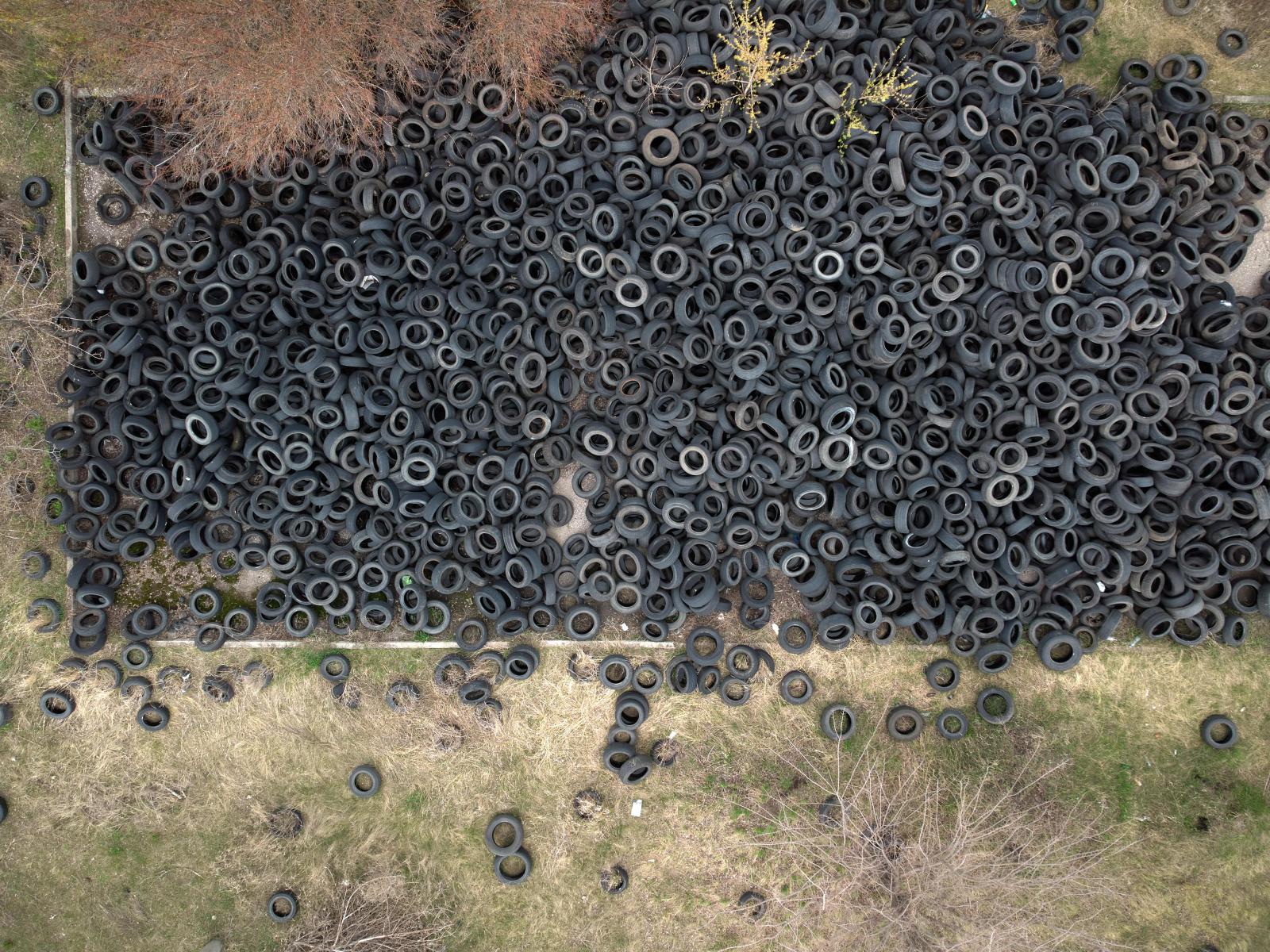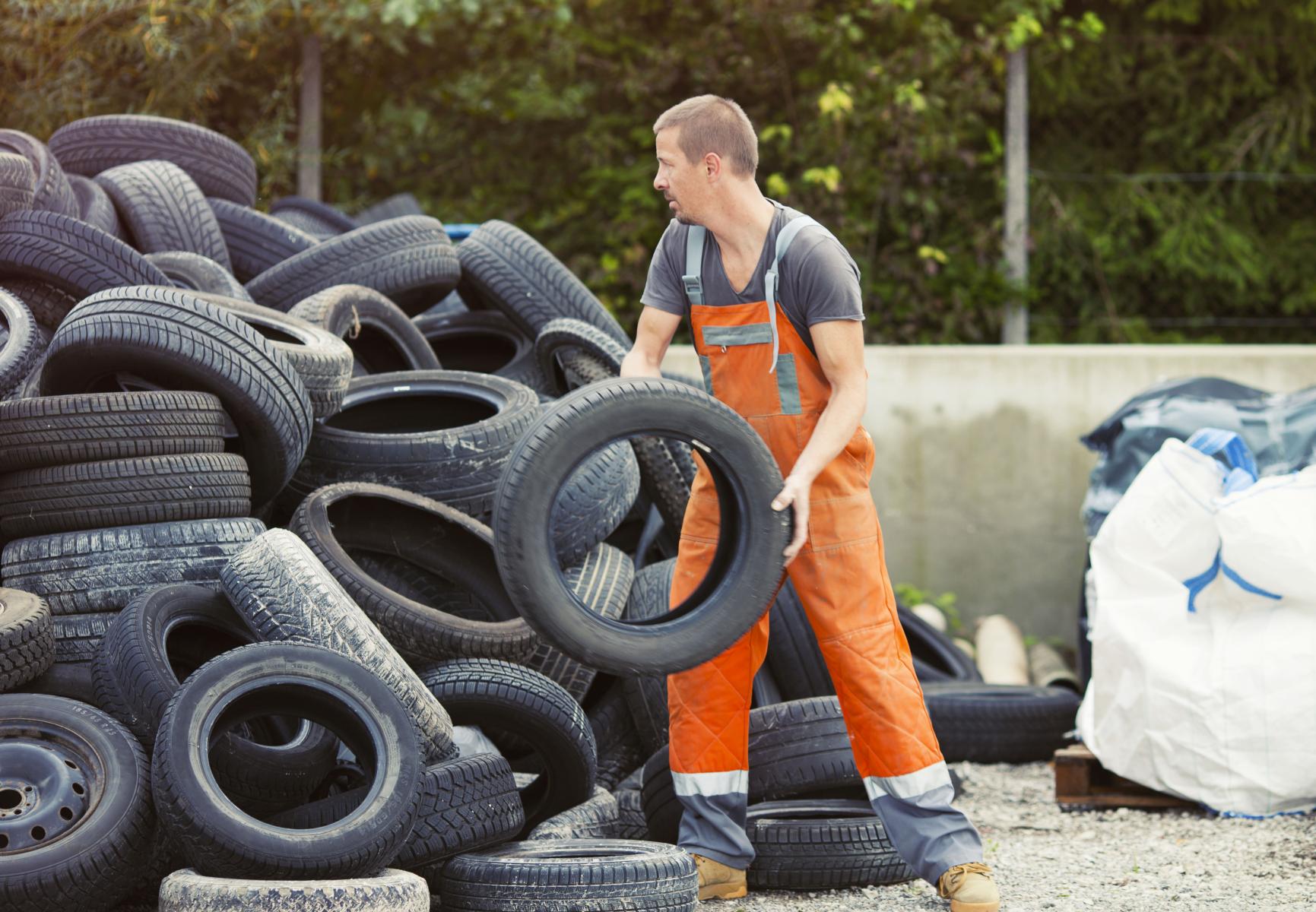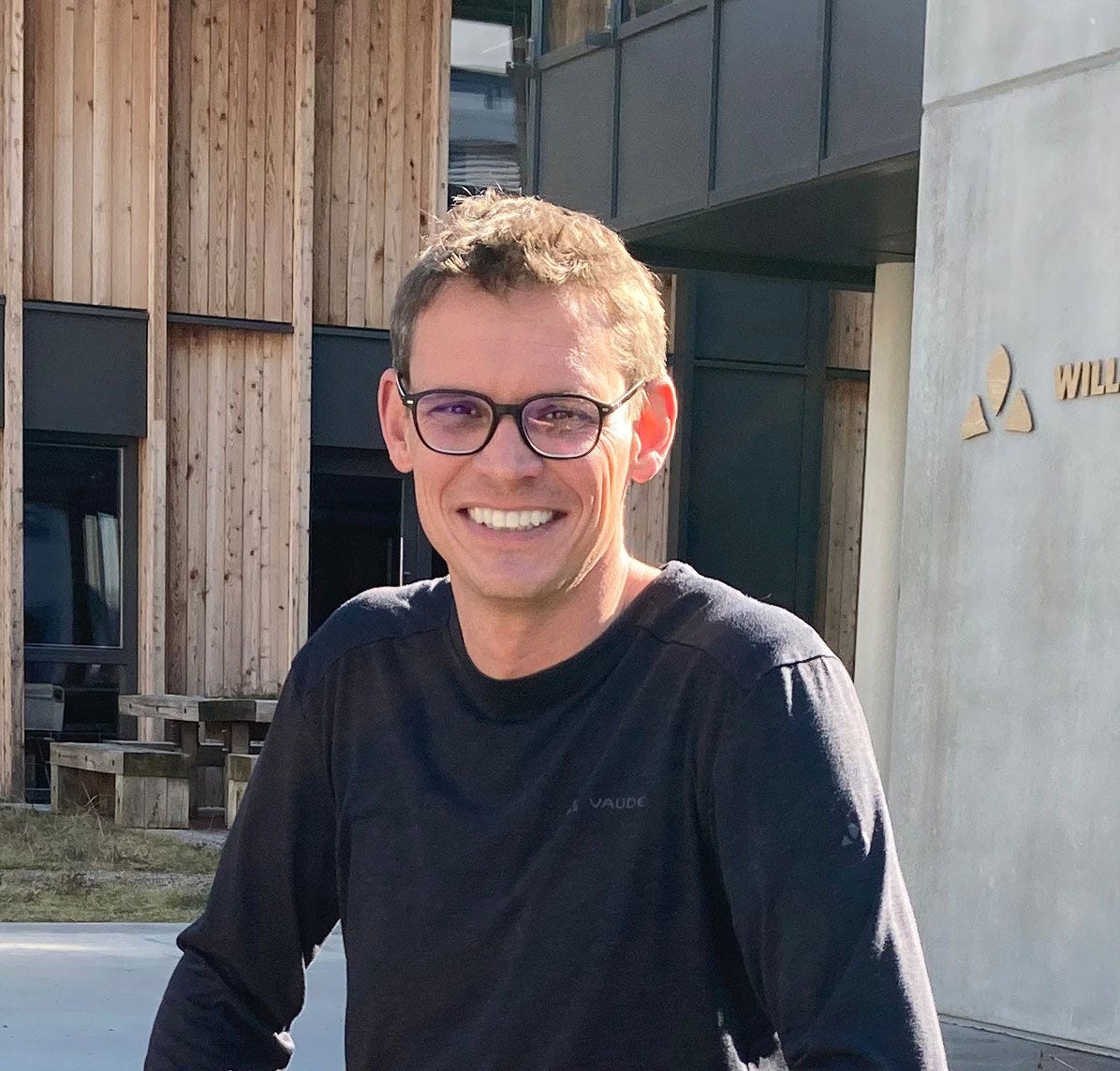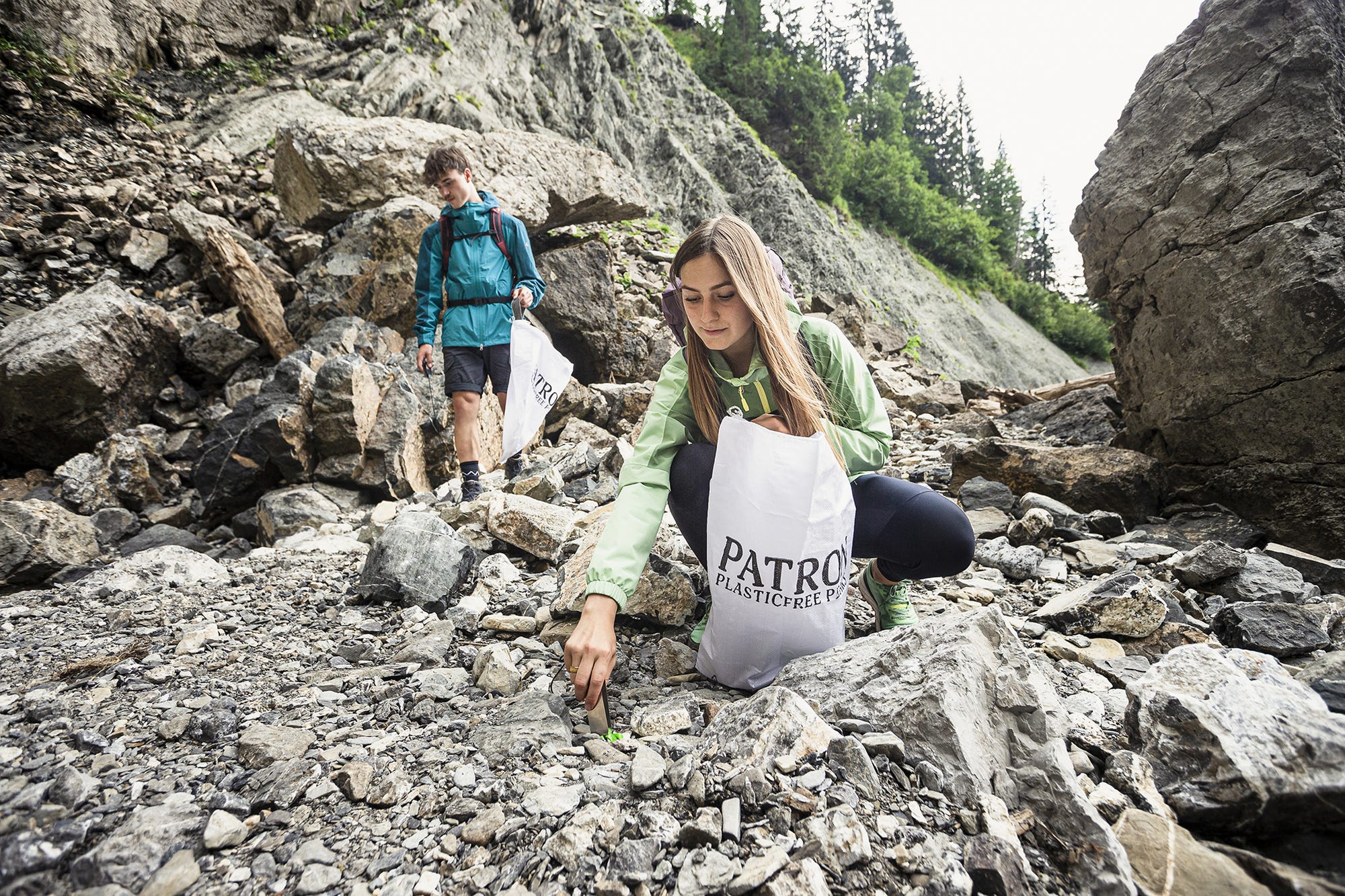Sustainable Outdoor gear made from recycled scrap tires
As the first outdoor company ever, we at VAUDE rely on a new recycling process by means of which the fabric for new functional clothing and equipment is created from the rubber of old car tires. Scrap tire recycling and the better-known PET-Recycling are important steps towards a circular economy. In the post, we explain why.


1.75 billion scrap tires from cars and trucks are generated worldwide every year. That's 9,900 every three minutes - enough to stack them into a tower that would be as tall as the summit of the 2,962-meter Zugspitze mountain. Of course, no one neatly stacks that many old tires on top of each other. Instead, they end up on incredibly huge mountains of garbage, some of which can even be seen from space. Tires that do not end up in landfills or in nature are incinerated. In the process, valuable and laboriously extracted raw materials are simply lost. After all, the crude oil from which the rubber for tires is made is a finite resource. Keeping it in a cycle and using it again and again protects our planet and the climate.


"We want to be pioneers when it comes to building a circular economy for our functional clothing. Reducing the need for primary fossil resources is a big step in this."
In nature, a cycle of raw materials is normal. Walking through the colorful forests and meadows, we can always observe the cycles of nature. Like old tires, the withered leaves have only reached the end of their useful life at first glance. In fact, they are only one station in the cycle. Within months, animals, microorganisms and fungi decompose the matter and soil is created, whose nutrients can be taken up again by trees and other plants. Already in spring, new leaves sprout and the cycle begins anew.


New recycling possibilities through pyrolysis
Unfortunately, what nature demonstrates to us does not work so easily with plastics. Until now, tires could only be recycled to a limited extent. They were shredded and processed into simple rubber mats, for example - this is known as downcycling. Thanks to new chemical recycling processes, this is now changing. Using a process known as pyrolysis, secondary raw materials are obtained from plastic waste. The company Pyrum from Dillingen an der Saar has been operating one of the most modern pyrolysis plants in Europe since 2020. Every day, 2,500 to 3,000 tires are recycled there, and the trend is rising.
First, the old tires are shredded and broken down into their components (rubber, steel and textile). In the absence of oxygen, the rubber is not simply melted at 300 to 700 degrees Celsius, as is the case with PET recycling. During pyrolysis, the plastics are broken down at the molecular level. The result is pyrolysis oil, which is equivalent in quality and properties to virgin crude oil. It can therefore be used as a raw material, for example, in the production of polyamide for outdoor clothing. The recycling process without loss of quality is a crucial prerequisite for technically sophisticated products. Pyrum has so far specialized in used tires, but in principle the process works with many different types of plastic. They do not have to be laboriously sorted and cleaned, as is the case with other recycling processes. Thanks to consistent quality, the process can be repeated virtually any number of times, thus enabling a true circular economy.




Processing the raw materials at such high operating temperatures consumes a lot of energy. However, since pyrolysis produces gas in addition to oil and some waste products (which are used elsewhere), Pyrum's plants can be self-sufficient. Electricity is only needed in the start-up phase. As soon as the necessary temperature is reached, a connected combined heat and power plant burns the gas, thus supplying the entire plant. Surplus electricity is fed into the grid, thus even balancing out the demand for the start-up phase. The question of energy use is important, because recycling is not just about reusing finite raw materials. The total footprint should be less than the production and use of new plastics. Pyrum has succeeded in making enormous CO2 savings in this area, as evidenced by the Fraunhofer analysis: CO2 savings Pyrum pyrolysis process (in german)
Used tires, BASF and the mass balance process


Where in nature nutrient-rich soil was created from colorful autumn leaves, Pyrum has now extracted oil from used tires. Another stop in the cycle. To produce polyamide from the pyrolysis oil, which can be used as a fabric for functional clothing and equipment, we are working with BASF. The chemical company is using a mass balance process in the ChemCycling project. In Ludwigshafen, the pyrolysis oil is fed into the production network alongside crude oil. The polyamide granules produced from this process bear the brand name Ultramid Ccycled. Because the quality is the same, it would be impossible to tell whether the resulting plastic was made from crude oil or pyrolysis oil. In fact, there is a little of both in everything. Mass balance means that the proportion of pyrolysis oil fed into the grid is mathematically equivalent to the demand for recycled polyamide. This can be compared to green electricity, which is fed into the power grid along with coal-fired electricity and others. In the end, the electricity from a socket cannot be attributed to a wind turbine, but the demand for green electricity determines the share in the electricity mix.
Functional outdoor products made from used tires for all year round use
Ultramid Ccycled is used to spin a yarn that can be processed like conventional polyamide into fabrics and then into backpacks and clothing. The first VAUDE pants based on scrap tires have already been on the market since spring 2022. About five such outdoor pants can be made from the pyrolysis oil that Pyrum extracts from a single scrap tire. The potential is huge given the amount of discarded tires generated each year. Not only does this reduce the consumption of primary resources, it also reduces greenhouse gas emissions.




"By recycling old tires in an innovative way, we can reduce the CO2 footprint by more than half."
Good reasons, then, to use the innovative material in more outdoor products. In addition to more pants, backpacks and jackets have been added during the year, with more products to follow. A big leap toward a circular economy in materials for outdoor gear. On to the next summit!






